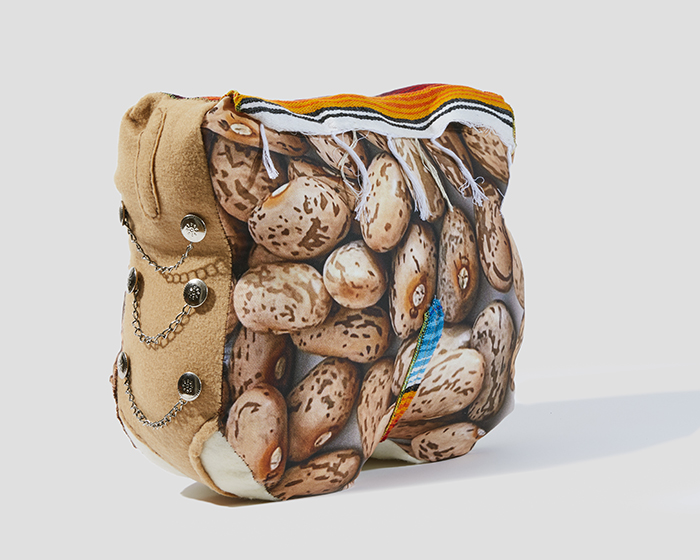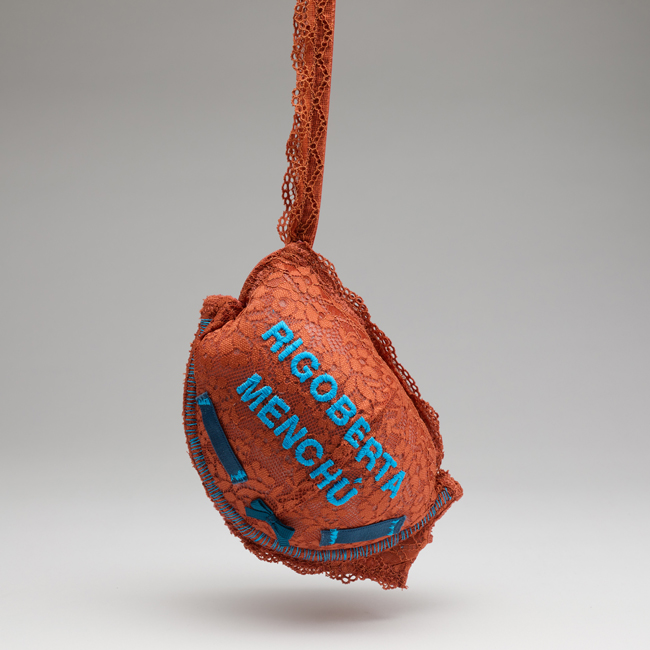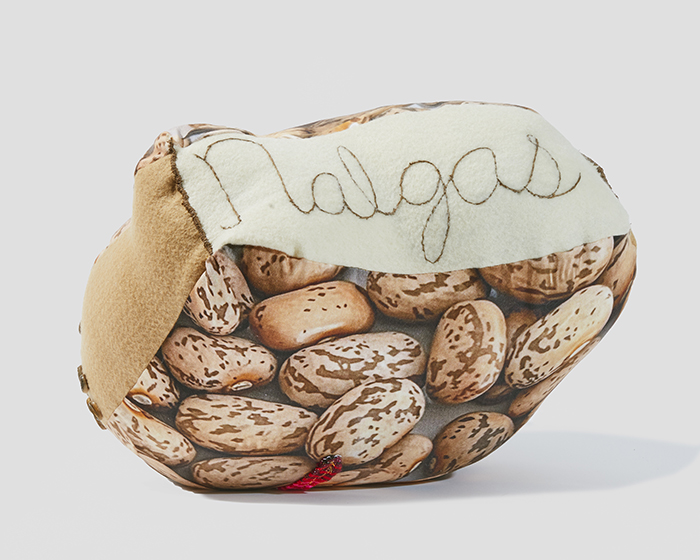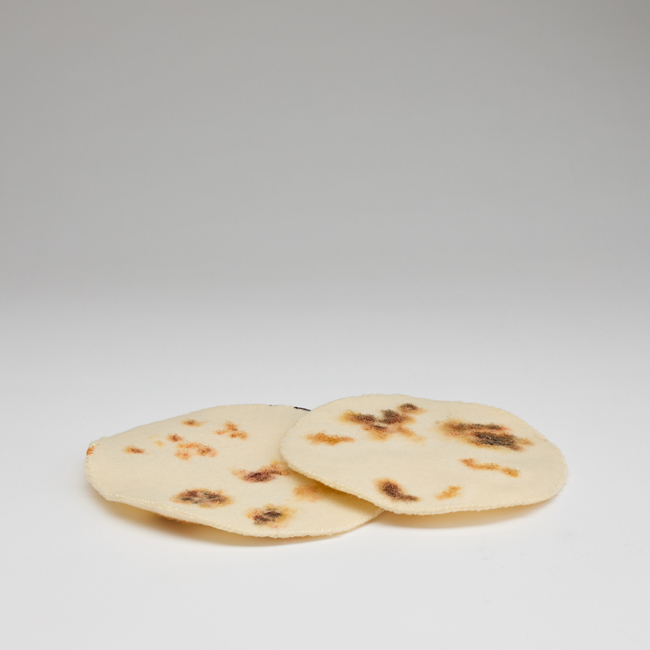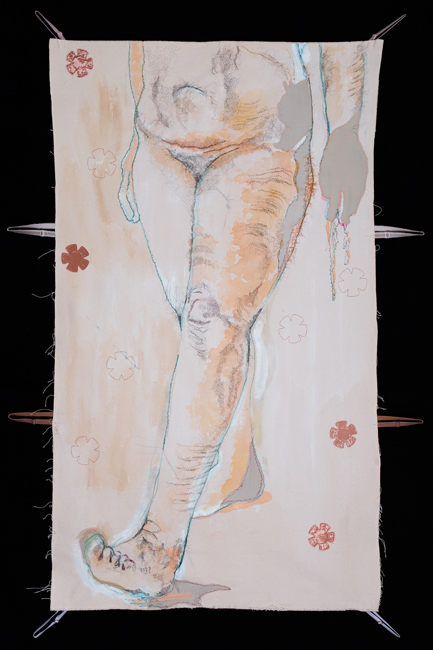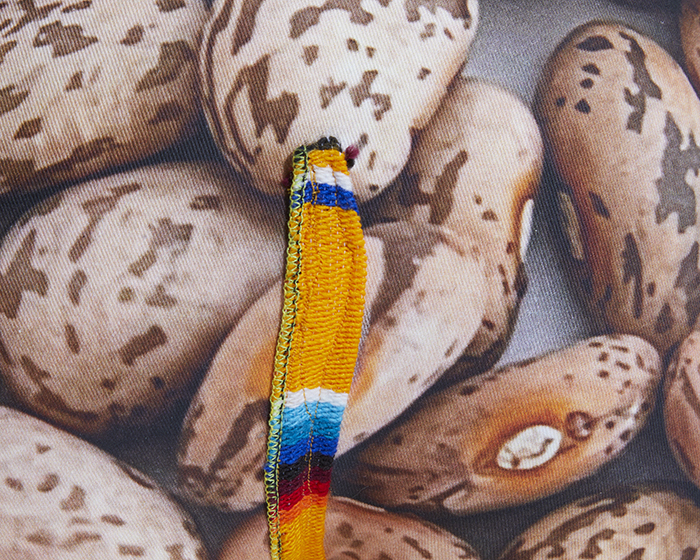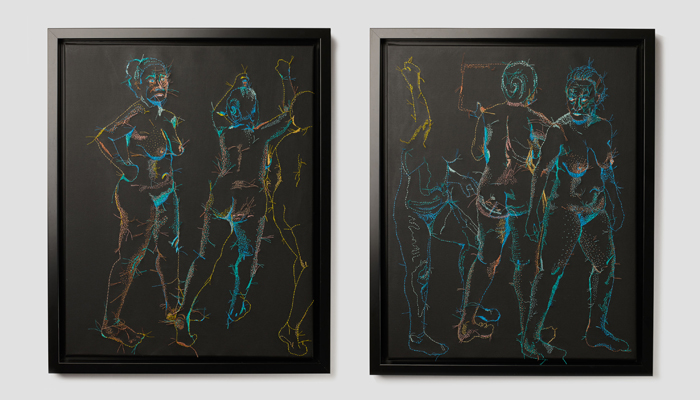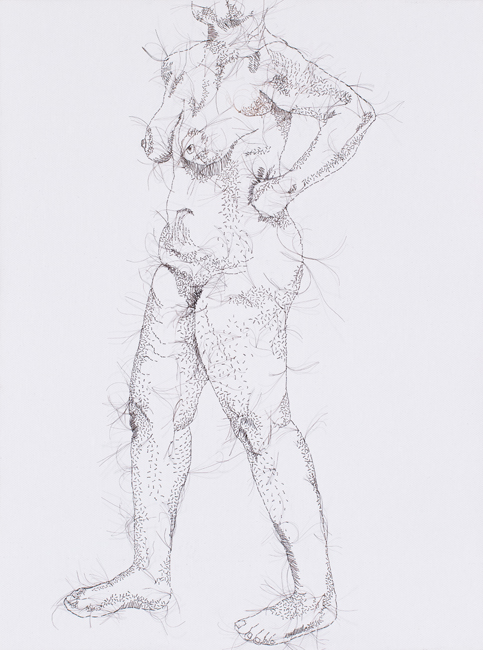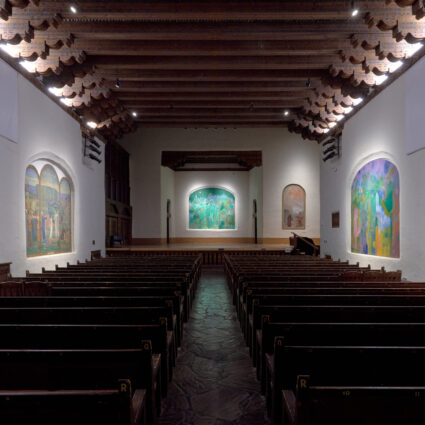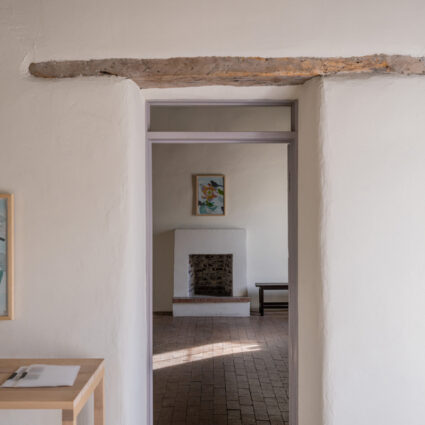Rosemary Meza-DesPlas’s varied and multi-faceted work, deeply rooted in the power of the human figure, addresses feminism, cultural identity, and contemporary politics.
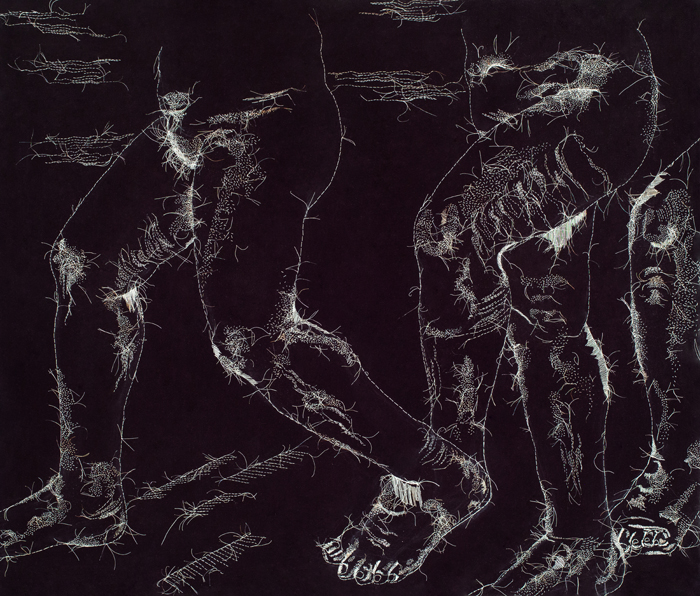
Contemporary art critics, it seems, are continually pronouncing the triumphant “return” of figural art. While they often posit the corporeal as a mere allusion to a larger thematic, Rosemary Meza-DesPlas’s work draws its centrifugal force from the figure, reading at once modern and timeless. Her practice is deeply rooted in bodily politics, exploring the experience of Latina female identity through textiles, installation, painting, drawing, poetry, and performance. Specifically, her multi-disciplinary work explores “the intersection of gender inequality, political agency, and cultural misconceptions,” according to her artist statement.
Marching Across Your Lawn, the Grass is on Fire (2020), a work of hand-sewn human hair on black fabric, depicts the cropped lower portions of three female bodies. The hair used to sketch the figures creates a sensation of energy and whimsy, as though the strands of hair are tinged with electricity as they demarcate the white silhouettes of the figures’ legs. This arduous method recalls the storied, if continually underrecognized, work of feminine domestic labor.
While her studio practice consists of labor-intensive methods, her work is anchored by familial history, academic research, and poetry, which also informs her performance art explorations of contemporary politics and cultural identity, among other topics. In 2022, Meza-DesPlas was the only New Mexico–based artist to receive a Latinx Artist Fellowship from the Mellon Foundation and Ford Foundation.
Works such as Miss Nalgas USA 2022 use a satirical beauty competition as a guise for frank discussions of the invisibility of middle-aged women. This is Not JLo’s Butt (2023) injects humor to showcase society’s limited range for Latina identity. The work, which comprises a playful pinto bean print fabric, felt, serape, and mariachi buttons, demonstrates her dual commitment to concept and material—as the art object still serves a critical role for an artist whose experimental yearnings appear endless.
Farmington, New Mexico | rosemarymeza.com | @rosemarymezadesplas
